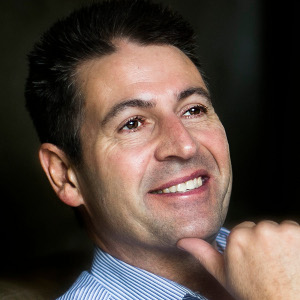
The CAT3 Appliance - AI Governance for Enterprise
One thing that has become clear as we've taken beth.ai to market. Our graph-based governance framework is something special.It lets us exercise more external control over how a Large Language Model gets used than anything else that has been advertised or published. Anywhere.
So we've turned it into a product. We call it CAT3 - after the Category 3 designation (BSL-3) given to bioscience labs that handle dangerous pathogens.
Three things that make CAT3 special.
The first is the Governance Knowledge Graph and symbolic reasoning that restricts what goes to an AI service like ChatGPT. It extracts the concepts from the prompt and checks them against an 80,000 concept ontology. Your admin clicks a handful of concepts to say what's in or out. It's deterministic, so it's repeatable and testable - unlike the "black boxes" it's controlling access to. You can also plug in third-party guardrails for multiple layers of protection.

The second key component is the CAT3 Forward Proxy. This key piece of infrastructure lets anenterprise completely lock down access to outside AI services. If a request doesn't pass the CAT3 rules, it doesn't get through the proxy and through your firewall.
The third innovation is perhaps the most important. CAT3 provides a back-channel to every user. The channel lets them know why an AI request has been blocked and what they need to do to meet your governance rules. It's the fastest way to get your team aligned with your AI-use strategies and needs.
CAT3 is a new class of security product - and like all Enterprise security products a customerwill need to have confidence in its vendor. For something this important, you don't want to be relying entirely on a startup. We'll therefore only be selling theCAT3 virtual appliance via appropriate partners. We're currently evaluating and negotiating with those partners. More soon.

Stephen Young is CEO of FactNexus and a knowledgegraph and complex data specialist. His lifelong passion for new knowledge technologies comesfrom his belief that our biggest problems are too complex to solve without artificial help. Steve re-engineered the famous ELIZA chatbot and built his first neural network as a CompSci andPsychology undergraduate and he published a web-based Knowledge graph, with web search and a conversational UI, a full two years before Google.
- More Articles
- Beyond RAG: Knowledge-Engineered Generation for LLMs
- Generative AI is Graph's Biggest Ever Opportunity
- Is Human Intelligence Just Autocomplete on Steroids?
- KayBot is Now beth.ai
- How to Build a Knowledge Graph
- What IS a Knowledge Graph?
- Why Your Slack Team Needs a Knowledge Base
- What is a SEMANTIC Knowledge Graph?
- Introducing EKG – and the Knowledge Graph about Knowledge Graphs